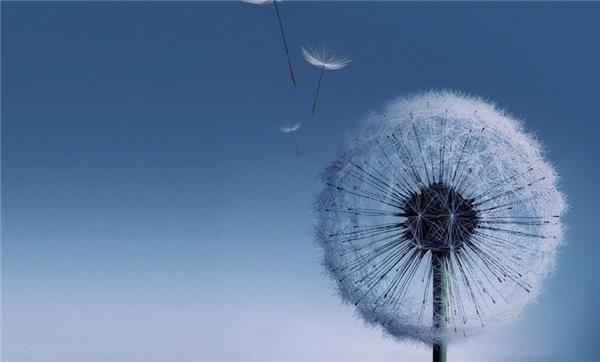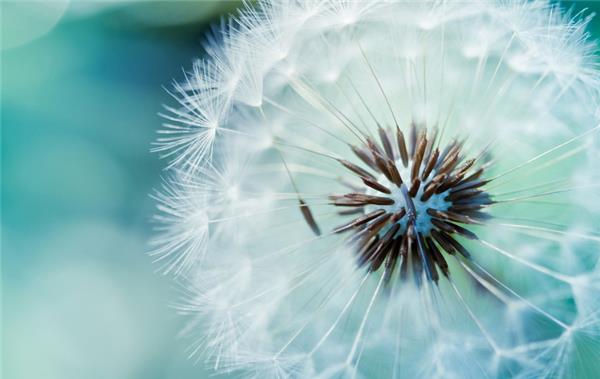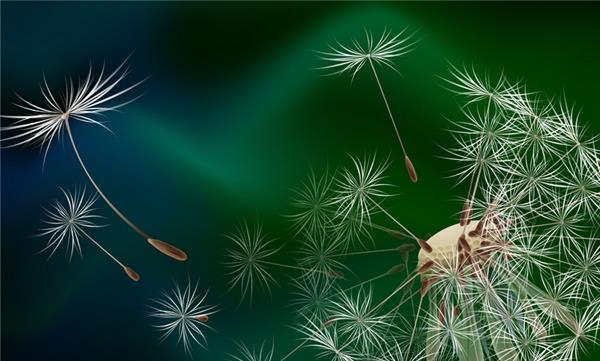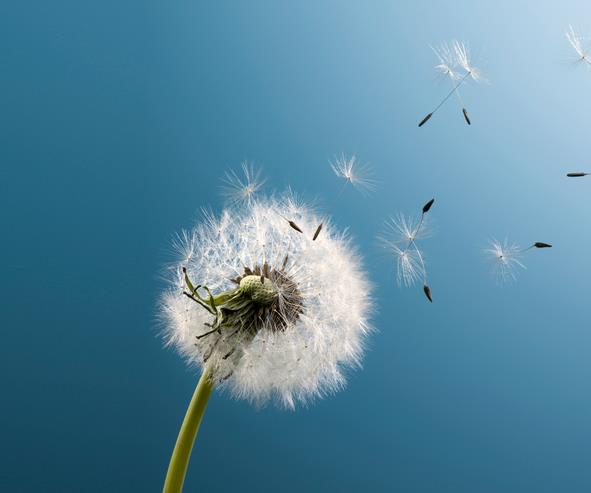Dandelion related knowledge introduction, teach you how to plant dandelion
Dandelion is a common plant, the shadow of dandelion can be found in urban and rural areas and fields. Dandelion not only has ornamental value, but also has medicinal value. Let's have a look next.

1. Introduction of dandelion
Dandelion alias Huanghua Di Ding, mother-in-law Ding, Hua Hua Lang and so on. Dandelion belongs to Compositae and dandelion is a perennial herb. Roots paniculate, surface brown, wrinkled, leaf margin sometimes with wavy teeth or pinnately parted, base tapering into petiole, petiole and main veins often reddish purple, scape distal purplish red, densely arachniform white villous; head, involucral bracts campanulate, achene dark brown, long crown hairs white. Dandelion head, seeds with white crown hair made of fluffy ball, flowers floated to a new place with the wind to give birth to new life, it is said that whoever can find purple dandelion can get perfect love. Dandelion plants contain many kinds of healthy nutrients such as dandelion alcohol, dandelion, choline, organic acid, inulin and so on. It has the effects of diuresis, relieving diarrhea, relieving jaundice, cholagogic and so on. Dandelion can be eaten raw, fried and made in soup. it is a plant for both medicine and food. The flowering period of dandelion is from April to September and the fruit period is from May to October. Although dandelion is not strict with soil conditions, it still likes soil with rich, moist, loose and high content of organic matter. Dandelion has a strong ability to resist disease and insect pests, and generally does not need pest control. It is widely born in hillsides, grasslands, roadsides, fields and beaches at middle and low elevations.

2. Cultivation of dandelion
In order to appear on the market early, a small arch shed can be used in early spring. In late autumn and early winter, water should be watered once, and then horse dung or wheat straw should be covered on the border to facilitate root plants overwintering and germinate new plants earlier in the following spring. The fleshy root of dandelion is stout; leaves basal, leaves narrowly oblanceolate, apex acute or peltate, margin pinnatifid, 20-65cm long, up to more than 80cm and 50-100mm wide; flowers drawn from leaves, capitate, 25-40mm in diameter; involucral bracts broadly campanulate, 13-25mm long, green, apex acuminate 4-10mm long; ligulate flowers, bright yellow; scape numerous, up to 100 branches, scape 20-70cm high Achenes light yellowish brown, 3-4mm long; there are a large number of small spikes above the middle, the rest are verrucous, the tip is suddenly constricted into a beak base with a length of 0.4-0.6mm, the beak is 7-12mm long, the crown hair is white, 6-8mm long, and the 1000-seed weight of the seed is 0.68g. The florescence begins in early April and enters the full fruiting period in early May. The full fruiting period lasts about 15 days. It blossoms sporadically throughout the year, and there is also a concentrated fruiting period from September to October.
1. Land selection and preparation
Dandelion has strong adaptability and can survive in most soils, but sunny, fertile and irrigated sandy soil should be selected for artificial cultivation. The soil was ploughed 25-30cm per 10000 mm2, organic fertilizer 30000-40000kg was applied, and the border was made to be sown.

2. Sowing and raising seedlings
Dandelions can be sown from April to September. The seed has no dormancy characteristic, and the vigor decreases rapidly after harvest, so it is best to choose the new seed just harvested in late May to sow. Direct seeding can also raise seedlings and transplant. Strip sowing is generally used for direct seeding. After pouring the bottom water, shallow ditches are opened according to the row spacing of 25-30cm, 500g per mu of seeds are used, and the ground is raked flat after sowing. When raising seedlings, special breeding beds are needed, sowing seeds 5g/m2, covered with soil below 0.5cm, and seedlings will emerge within 7-15 days. Get rid of weeds early.
3. Colonization
It can be planted when the height of the seedling in the seedling bed is more than 10cm and the seedling has more than 4 true leaves. Different plant row spacing was used according to different cultivation purposes. For medicinal and edible cultivation, the plant row spacing is generally 25cm × 25cm, and the better plot can also reduce the density. For ornamental use, it can be planted in a deeper disk, or the density can be adjusted appropriately according to the shape of the green belt. After planting, watering planting water and slow seedling water, and then ploughing and weeding.

4. Field management
Direct seeding seedlings in the seedling stage to pull out weeds in time, pulling weeds can be carried out together with the seedlings. After two seedlings, the seedlings were fixed according to the row spacing of 25cm × 25cm. If the aboveground parts are not harvested in the same year, the growth should be promoted, which is conducive to the accumulation of root nutrients. Topdressing twice, mainly available nitrogen fertilizer. In the second year, it can blossom and seed, watering and topdressing once before flowering and after seed setting, when the dandelion leaves have completely covered the ground, as long as a few big grasses in the field can be pulled out. For ornamental use, the withered and yellow leaves and irregular scape should be removed in time, the mature scape of the seed should be removed in the full flowering stage, and the newly blooming flowers should be removed in the fruit stage. In the late autumn of each year, the aboveground parts should be cleaned up in time after withering and yellowing, so as to prevent germs and pests from overwintering in the cultivated land.
The above is the relevant knowledge of dandelion, hope to help you.
To prevent germs and pests from overwintering in the cultivated land.
The above is the relevant knowledge of dandelion, hope to help you.
Related
- Wuhan Hospital Iron Tree Blooming Result Was Instantly Frightened by the Gardener Master
- Which variety of camellia is the most fragrant and best? Which one do you like best?
- What is the small blue coat, the breeding methods and matters needing attention of the succulent plant
- Dormancy time and maintenance management of succulent plants during dormancy
- Minas succulent how to raise, Minas succulent plant pictures
- What are the varieties of winter succulent plants
- How to raise succulent plants in twelve rolls? let's take a look at some experience of breeding twelve rolls.
- Attention should be paid to water control for succulent plants during dormant period (winter and summer)
- Watering experience of twelve rolls of succulent plants
- Techniques for fertilizing succulent plants. An article will let you know how to fertilize succulent plants.



